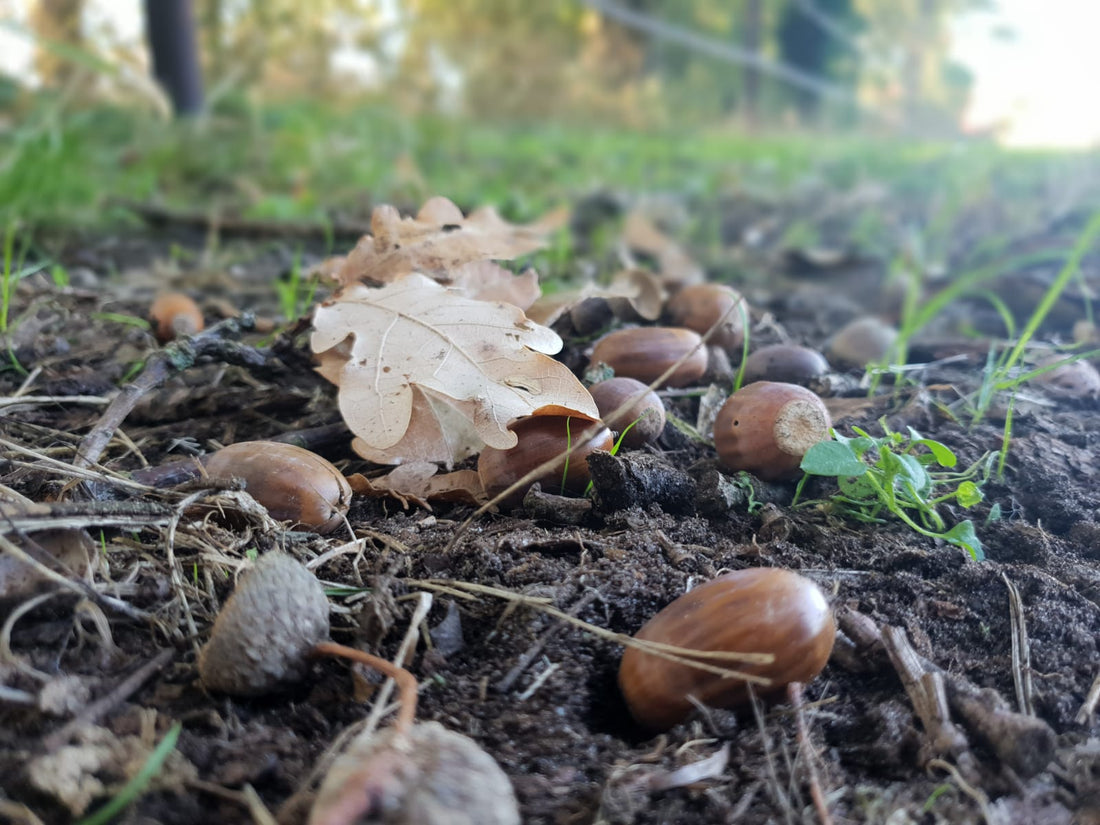As the leaves begin to change colour and the temperatures begin to drop after what has been one of the hottest summers for many years, it's time to look at some of the hazards for horses during the Autumn months.
A common hazard for many fields are the lines of oak trees surrounding them. Offering beautiful shade during the summer months, as acorns fall from the oak trees in Autumn they become a very serious health problem for horses. Some horses will develop a taste for acorns, but it is not only those that can cause issues, every part of the oak tree can cause gastrointestinal and kidney damage to your horse. They are dangerous due to the high level of tannic acid in the branches, leaves and acorns.
It may not be necessary to remove all horses from the fields containing oak trees, but it is very important to keep a close eye on your horses habits, and look for signs of acorn poisoning, such as dehydration, constipation, bloody urine or in the worst case, colic. When there is less pasture for the horses on the field it is more likely they'll go looking for acorns or leaves, so keep this in mind.
When checking for oak trees, also keep an eye out for Sycamore trees. It is the sycamore seeds, which are often found in grazing during autumn and spring, that can cause an often fatal disease called seasonal pasture myopathy or atypical myopathy. Ensuring your horses are not on fields under sycamore trees is the best way to prevent this disease.
The first autumn frost should also be carefully watched for as it can bring with it some short-term health issues. Be conscious of putting your horses out on the fields before the frost has melted as the wet dew can contribute to "dew poisoning" on the pasterns (commonly known as mud fever or greasy heel) as well as potentially cracking skin around the muzzle which can be very painful.
While we're all very much looking forward to some rain after the very dry summer, wet weather can also lead to troubles with your horses hooves. Muddy fields can often be a breeding ground for thrush, the horrible fungal infection that can eat and destroy your horses frog, so it's important to be prepared for such cases. If you notice a bad smell in your horses hooves the chances are fairly high that it is thrush. It's not easy to get rid of once it's found it's way into your horses hoof, but a great product to use is Cavalor's Dry Feet.
Autumn can be a beautiful time of the year, but be sure to keep an eye out for the hazards it can bring with it for your horses.




